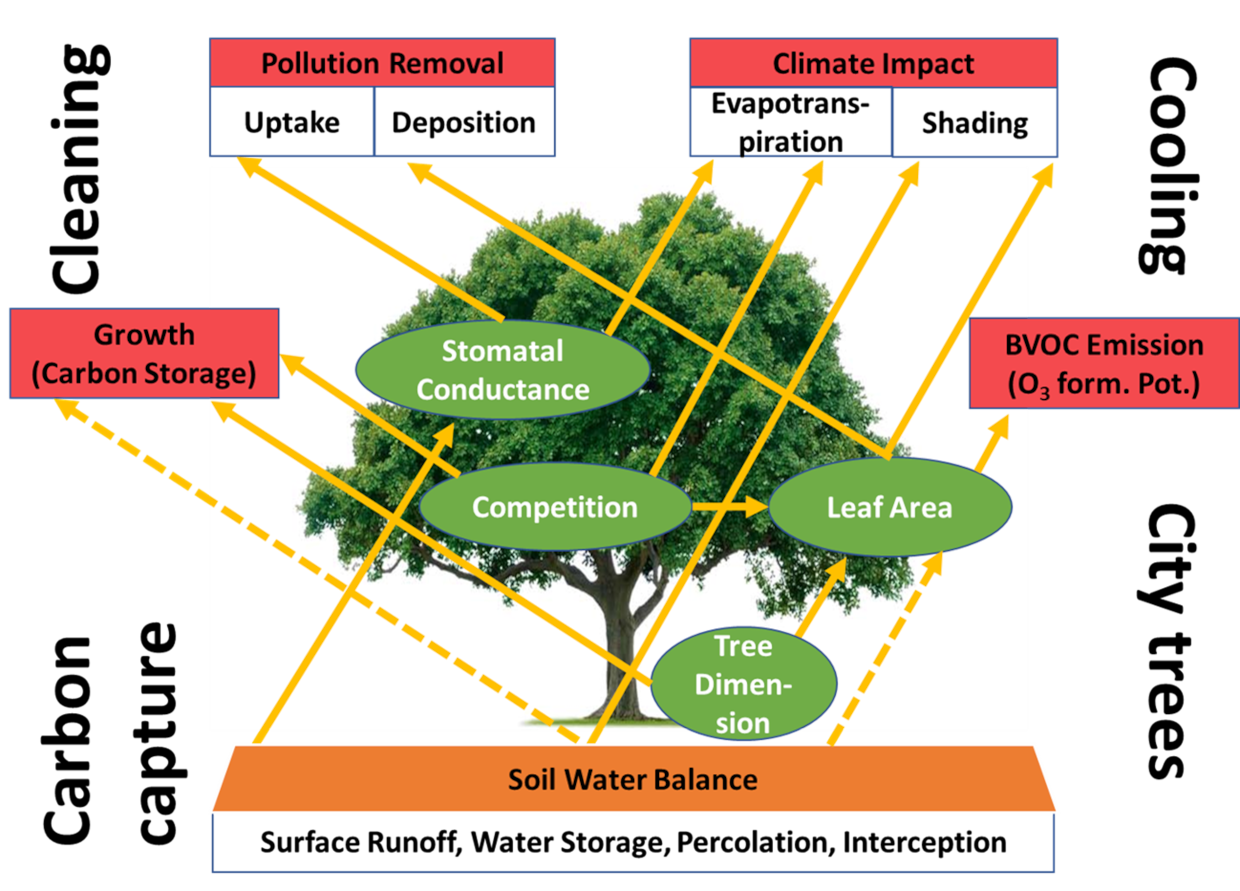Experiments
Plant research facility
Responses of plants and trees to environmental change are studied in this high-tech greenhouse facility. The experimental results increase process understanding and provide input for developing model frameworks. The research facility consists of four individual compartments in which temperature, humidity, radiation, and atmospheric CO2 concentrations can be easily manipulated. We have designed additional chamber systems to continuously measure CO2 and H2O exchange between plants and the atmosphere, including volatile organic compounds. Our latest development allows to determine the tree net carbon balance under changing conditions (right picture), stress-triggered tipping-points as well as carbon allocation using stable isotope techniques. These measurements are supplemented by other instrumentation including a leaf gas exchange system, 13C isotope laser, automated stem dendrometers, pressure chamber, cavicams, thermography, soil moisture as well as lab instrumentation to analyze carbohydrates or isotopes in plant samples.

Tree Flux system
Our high-precision Tree Flux system is one of only a few setups worldwide capable of quantifying whole-tree carbon and water fluxes in both shoots and roots under highly controlled environmental conditions. This system provides critical data on tree functioning during stress and recovery across species and climate scenarios. The Tree Flux system enables independent measurement of above- and belowground CO₂ and H₂O exchange while precisely regulating CO₂ levels, light, temperature, humidity, and soil moisture. Automated irrigation supports realistic dry-down experiments and optional ¹³C tracer studies further expand the system’s experimental capabilities.
This platform enables us to uncover physiological tipping points and track how trees rebalance carbon and water after heat or drought stress. Combined with complementary measurements including non-structural carbohydrates, water potential, high-resolution tree growth it has revealed species-specific thresholds during heat (Rehschuh et al 2022), drought (Gattmann et al 2021), post-drought recovery (Knüver et al 2025), and combined heat–drought stress under elevated CO₂ (Birami et al 2020). This improved mechanistic understanding directly strengthens our process-based modelling work.

Modelling
Tree4C model
In order to evaluate ecosystem services provided by urban trees in cities such as Karlsruhe, we use the Tree4C model, a physiology-oriented tree model that runs based on individual tree structure (from tree inventories), environmental forcings and pollution data. The model addresses three different ecosystem services for individual trees: cleaning, cooling, and carbon sequestration. Cleaning refers to a species- and size-specific calculation of air pollutant deposition. Cooling is derived from tree transpiration and tree canopy shading. Tree carbon sequestration is based on photosynthetic CO2 uptake and tree growth. The model is being further developed to consider damaging effects from stress, in particular drought, which can result in leaf senescence and tree mortality. An outstanding feature is that the model is able to quantify the ecosystem services of a large population of trees in cities like Munich or Karlsruhe based on the morphological and physiological characteristics of individual trees.

PSIM in LandscapeDNDC
Measurement results from field and greenhouse are used for the development of models that then serve to analyze the impact of environmental conditions on tree and forest dynamics. To bridge from tree physiological impacts to forest ecosystems we apply LandscapeDNDC a model system that includes modules of different complexity to describe soil decomposition processes, water fluxes and plant processes. We focus on the physiological-oriented plant module PSIM to represent tree or ecosystem related pools and fluxes such as photosynthesis, respiration, carbon and nitrogen allocation, as well as senescence. The model results in dynamic changes of pools (leaves, fine roots, living and dead wood) and dimensions (tree height, diameter, crown dimension, and rooting depth). Recently, we further developed PSIM to consider tree hydraulic processes. In particular, we address non-stomatal limitations of photosynthesis (NSL), the support of transpiration by internal water storage once stomata have closed and the loss of xylem and leaf tissue in relation to plant water potential.

Observations
Educational forest
.jpg)
Tracking tree growth with young scientists
How do trees grow through the year? And how does the environment influence that growth? These are questions we explore with schoolchildren in Garmisch-Partenkirchen.
In this project, we support environmental education by helping kids learn how tree growth changes with the seasons. Trees in temperate climates grow mainly in spring and summer, then pause in autumn and winter. Different species also respond differently to weather and climate.
To observe this, we have installed measuring tools - dendrobands and dendrometers - on trees like Norway spruce, Scots pine, and Sycamore. The children take readings on the dendrobands themselves throughout the year, and we later turn their data into graphs to compare with the automated dendrometers as well as environmental conditions. Together, we discuss why some trees grew differently than others.
This hands-on approach introduces the children to forest ecology and helps them appreciate the important role forests play in our environment.

.svg)
